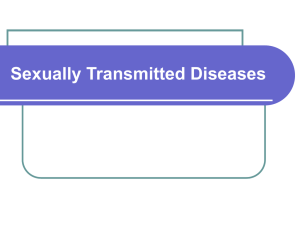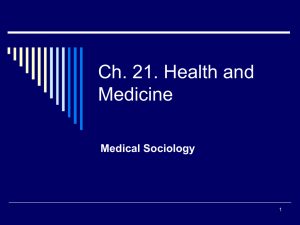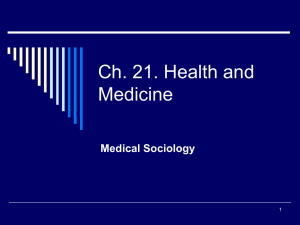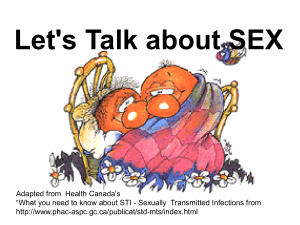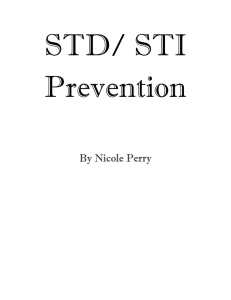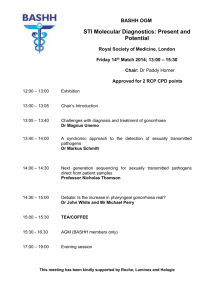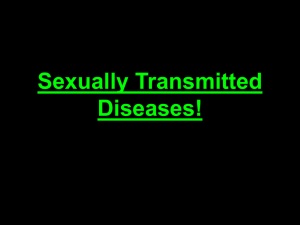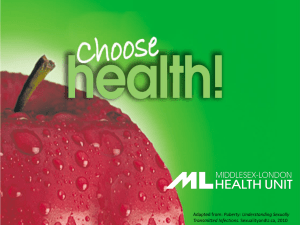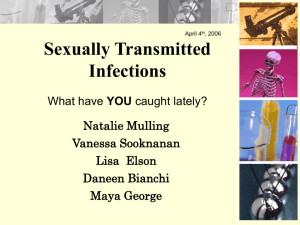Sexually Transmitted Infections (STI`s)
advertisement
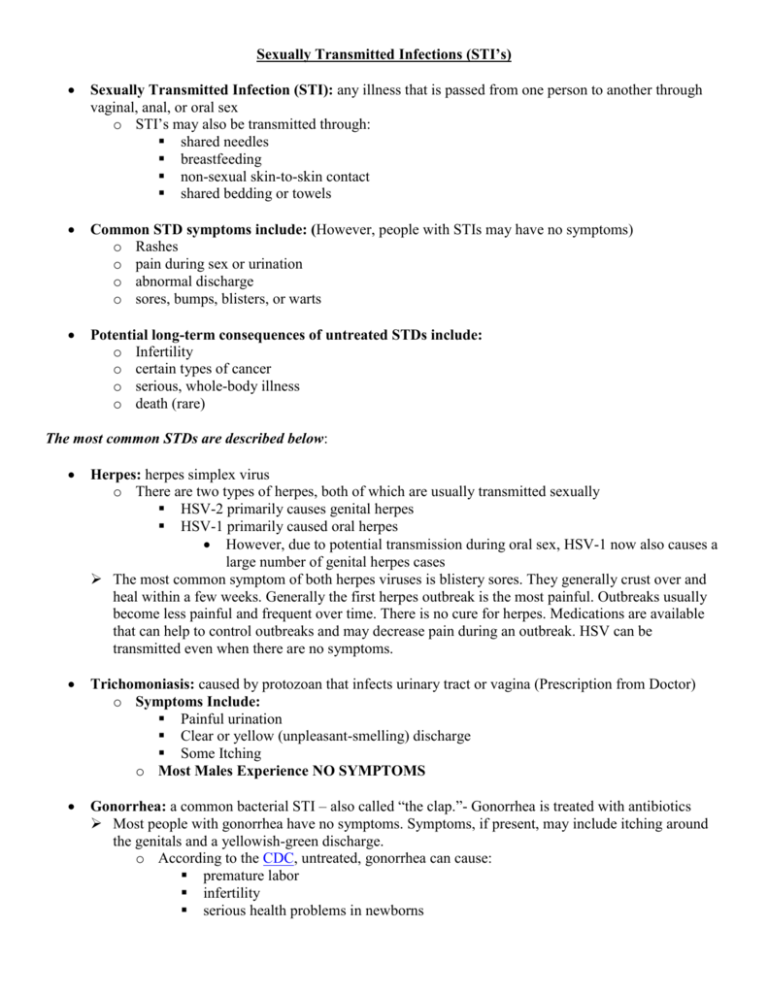
Sexually Transmitted Infections (STI’s) Sexually Transmitted Infection (STI): any illness that is passed from one person to another through vaginal, anal, or oral sex o STI’s may also be transmitted through: shared needles breastfeeding non-sexual skin-to-skin contact shared bedding or towels Common STD symptoms include: (However, people with STIs may have no symptoms) o Rashes o pain during sex or urination o abnormal discharge o sores, bumps, blisters, or warts Potential long-term consequences of untreated STDs include: o Infertility o certain types of cancer o serious, whole-body illness o death (rare) The most common STDs are described below: Herpes: herpes simplex virus o There are two types of herpes, both of which are usually transmitted sexually HSV-2 primarily causes genital herpes HSV-1 primarily caused oral herpes However, due to potential transmission during oral sex, HSV-1 now also causes a large number of genital herpes cases The most common symptom of both herpes viruses is blistery sores. They generally crust over and heal within a few weeks. Generally the first herpes outbreak is the most painful. Outbreaks usually become less painful and frequent over time. There is no cure for herpes. Medications are available that can help to control outbreaks and may decrease pain during an outbreak. HSV can be transmitted even when there are no symptoms. Trichomoniasis: caused by protozoan that infects urinary tract or vagina (Prescription from Doctor) o Symptoms Include: Painful urination Clear or yellow (unpleasant-smelling) discharge Some Itching o Most Males Experience NO SYMPTOMS Gonorrhea: a common bacterial STI – also called “the clap.”- Gonorrhea is treated with antibiotics Most people with gonorrhea have no symptoms. Symptoms, if present, may include itching around the genitals and a yellowish-green discharge. o According to the CDC, untreated, gonorrhea can cause: premature labor infertility serious health problems in newborns Chlamydia: According to the CDC, chlamydia is the most commonly reported bacterial STI in the US Most people with chlamydia have no symptoms. When symptoms are present, they are similar to those of gonorrhea. o Left untreated, chlamydia can cause: pelvic inflammatory disease (PID) infertility infant health problems, including blindness (rare) Chlamydia can be treated with antibiotics. Syphilis: bacterial infection - often goes unnoticed in the early stages - treated with antibiotics The main early symptom is a painless, round sore (chancre) Later symptoms of syphilis include: o Fatigue o low-grade fever o rash o muscle pain o If left untreated, late-stage syphilis can lead to: peripheral nerve damage brain damage death HPV (Human Papillomavirus): there is a preventative vaccine that can help protect against HPV HPV can cause a range of health issues, including: o genital warts o cervical cancer o oral cancer o penile cancer o rectal cancer o vulvar cancer There is no cure for HPV – However - Most HPV infections will not become cancerous – but According to the American Cancer Society, two-thirds of cases of cervical cancer in the US are caused by HPV-16 and HPV-18 HIV (Human Immunodeficiency Virus) - a person can carry HIV and not show any symptoms for 10 years or longer. o left untreated, HIV can compromise your immune system and cause acquired immunodeficiency syndrome (AIDS). There is no cure for HIV. Free and confidential testing can be found in all major cities and many public health clinics. Other STD’s - Other, less common, STDs include: o Chancroid o lymphogranuloma venereum o molluscum contagiosum o pubic lice o scabies Diagnosing Sexually Transmitted Infections: most STDs can be diagnosed using a urine or blood test, swabs may be taken of sores to check for viruses. Urethral and vaginal swabs can also be used to diagnose STI’s. Where: o doctor’s office or at a clinic o home testing kits are available o Internet STD testing is also an option WOMEN: It’s important to know that a Pap smear is not an STD test. A Pap smear checks for the presence of precancerous cells on the cervix. It may also be combined with an HPV test for some women. However, a negative Pap smear does not mean you don’t have other STDs. Preventing Sexually Transmitted Infections: o Abstinence is the only foolproof way to avoid contracting an STI o condoms used properly provide the best protection against STIs, and have the additional benefit of providing contraception. o Hormonally based birth control options, such as the pill and the ring, do not protect you from STIs. SEXUAL RELATIONSHIPS: It’s important to discuss your sexual history and you should be screened for STIs before having sexual relationships. As STDs often have no symptoms, testing is the only way to know if you are infected. Eligible people should also consider getting vaccinated for HPV and hepatitis Sti Facts to remember: 19 million new cases in the US every year Health care expenses amount to well over 10 billion dollars every year Over 3 million cases occur in people in US under age 20 every year STI GROUP RESEARCH DISCOVERY Prevalence of STI in United States Prevalence in Teens 3-5 strange or interesting statistics or facts (not shared above)
